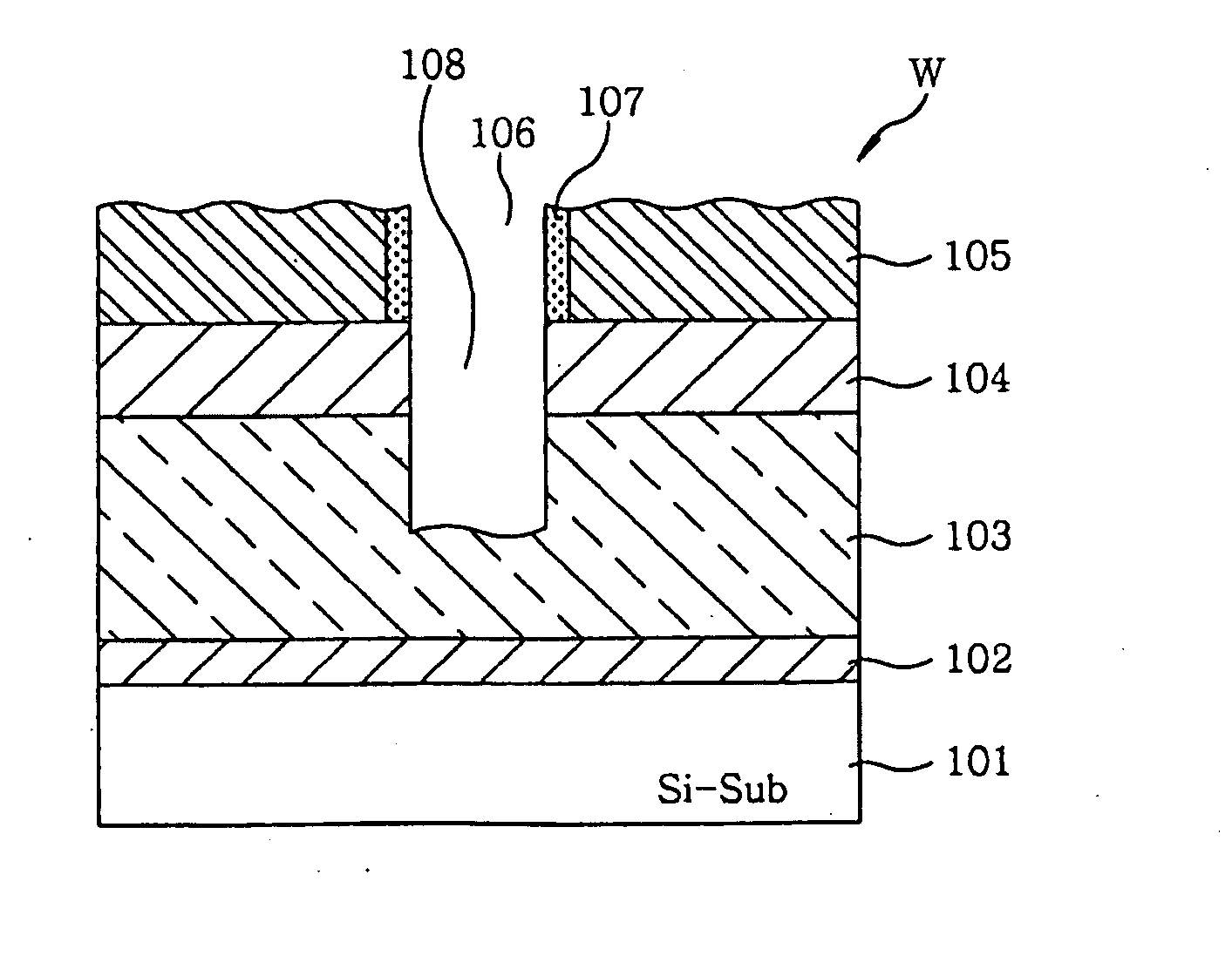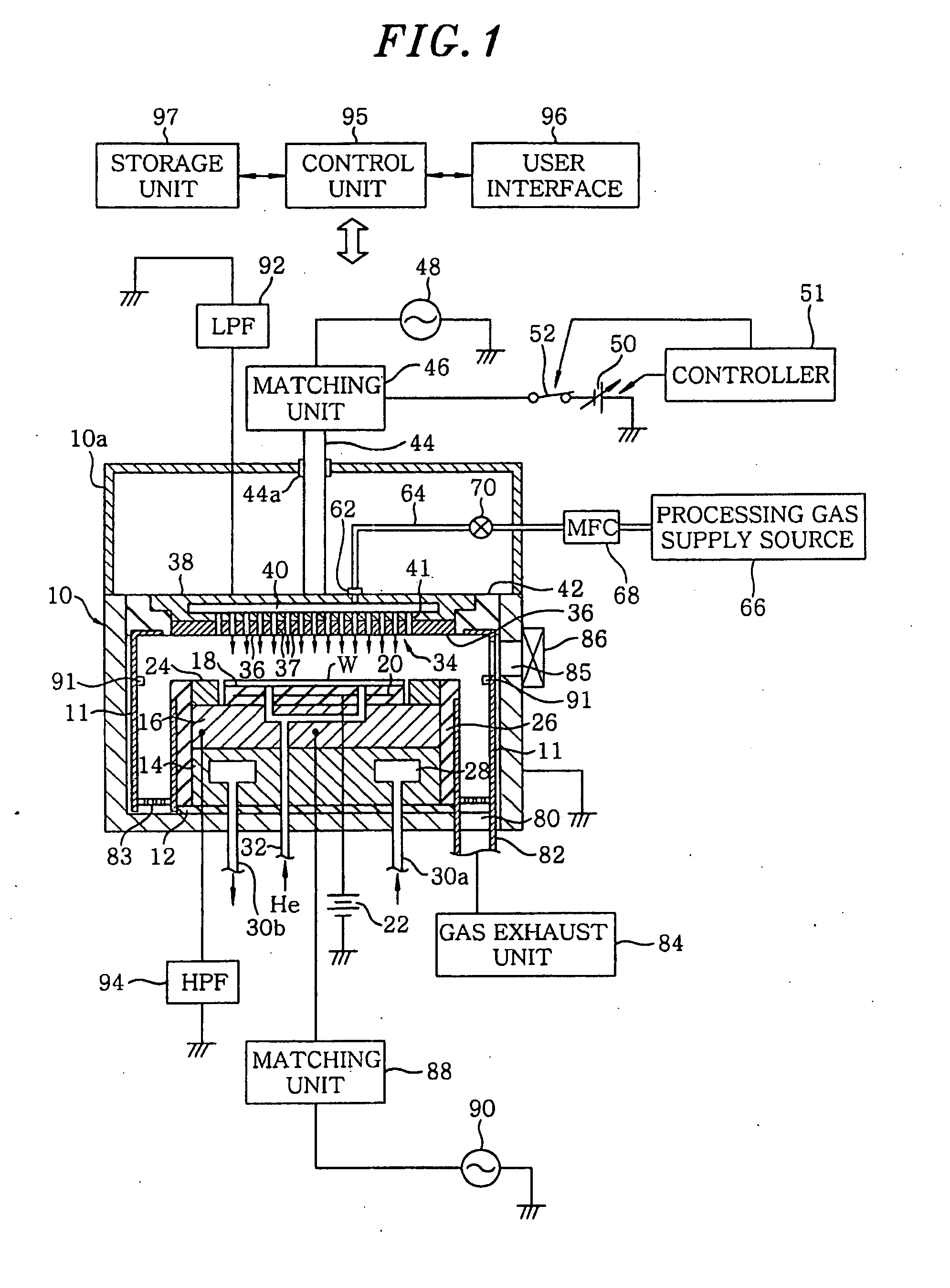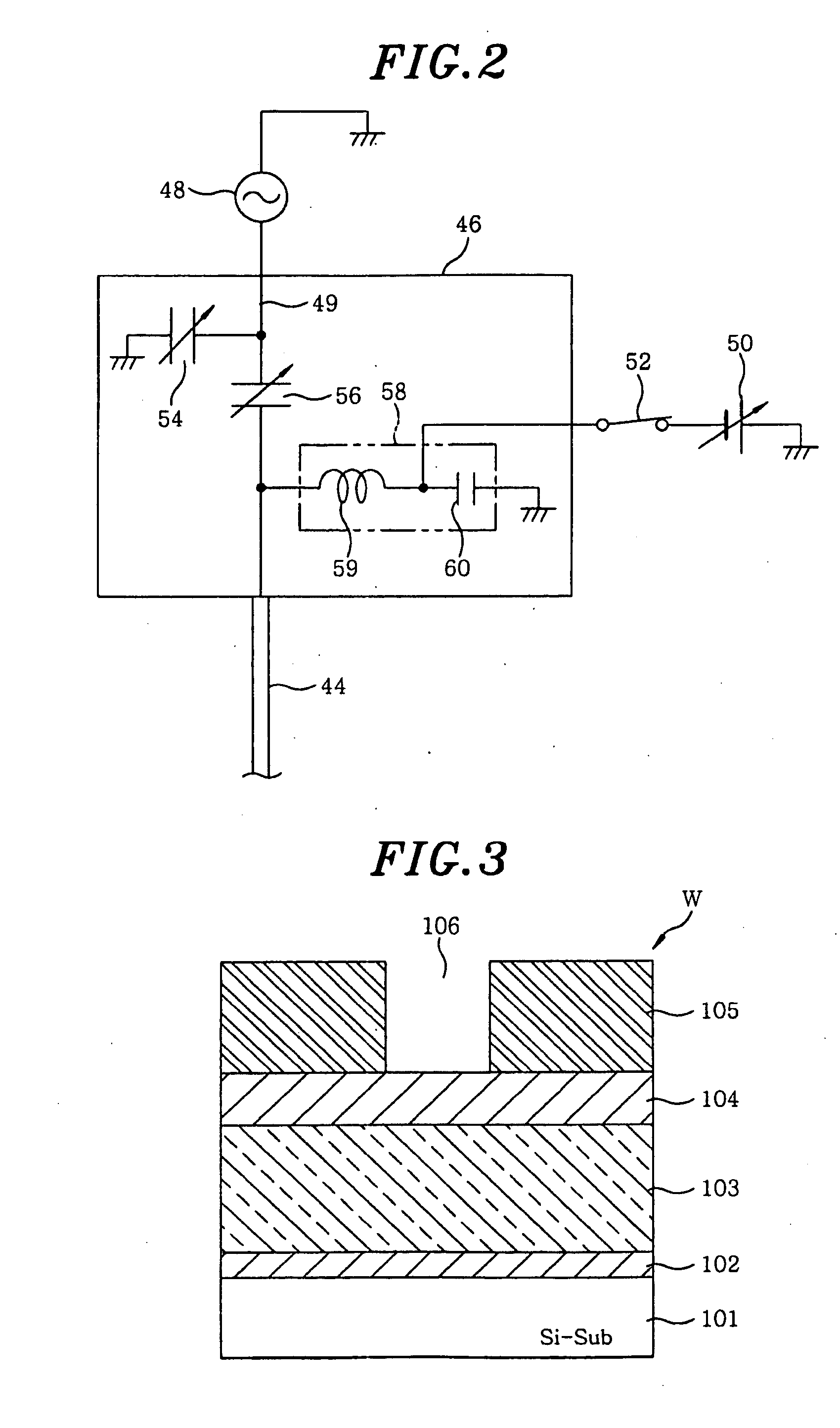Plasma etching method, plasma etching apparatus and storage medium
a plasma etching and plasma technology, applied in the direction of electrical equipment, basic electric elements, electric discharge tubes, etc., can solve the problems of difficult to form finer holes, easy generation of cracks, surface state deterioration, etc., to reduce opening size, improve throughput, and increase the thickness of the photoresist film
- Summary
- Abstract
- Description
- Claims
- Application Information
AI Technical Summary
Benefits of technology
Problems solved by technology
Method used
Image
Examples
first embodiment
[0077]Hereinafter, there will be described a plasma etching method in accordance with the present invention, which is performed by the plasma etching apparatus having the aforementioned configuration.
[0078]Here, a semiconductor wafer W to be processed has an etching stopper film 102, an etching target film 103, a bottom anti-reflection coating (BARC) film 104 and a patterned photoresist film 105 that are sequentially formed on a Si substrate 101 as shown in FIG. 3.
[0079]The etching stopper film 102 is, e.g., an SiC film. The etching target film 103 as an interlayer insulating film is, e.g., an SiO2 film or a Low-k film. The BARC film 104 is, e.g., an organic film, and its thickness is about 80 nm. The photoresist film 105 is, e.g., an ArF resist of which thickness is about 120 nm.
[0080]In a plasma etching processing, the gate valve 86 is first opened, and the semiconductor wafer W having the above-described configuration is loaded into the chamber 10 through the loading / unloading po...
second embodiment
[0114]Hereinafter, a plasma etching method in accordance with the present invention will be described.
[0115]In the second embodiment, a semiconductor wafer W shown in FIG. 10 is used as a substrate to be processed, the semiconductor having an etching stopper film 202, an etching target film 203, an organic BARC film 204 and a patterned photoresist film 205 which are sequentially formed on a Si substrate 201. Before etching the etching target film 203, the organic BARC film 204 is etched by using the photoresist film 205 as a mask.
[0116]When the etching is performed, the organic BARC film 204 needs to be etched with a high etching selectivity to the photoresist film 205 in view of ensuring a sufficient amount of a residual mask film. However, the organic BARC film 204 has a similar composition as that of the photoresist film 205 such as an ArF photoresist film or the like. Therefore, when the organic BARC film 204 is etched, the photoresist film 205 is etched at substantially the sam...
PUM
| Property | Measurement | Unit |
|---|---|---|
| DC voltage | aaaaa | aaaaa |
| DC voltage | aaaaa | aaaaa |
| frequency | aaaaa | aaaaa |
Abstract
Description
Claims
Application Information
 Login to View More
Login to View More - R&D
- Intellectual Property
- Life Sciences
- Materials
- Tech Scout
- Unparalleled Data Quality
- Higher Quality Content
- 60% Fewer Hallucinations
Browse by: Latest US Patents, China's latest patents, Technical Efficacy Thesaurus, Application Domain, Technology Topic, Popular Technical Reports.
© 2025 PatSnap. All rights reserved.Legal|Privacy policy|Modern Slavery Act Transparency Statement|Sitemap|About US| Contact US: help@patsnap.com



